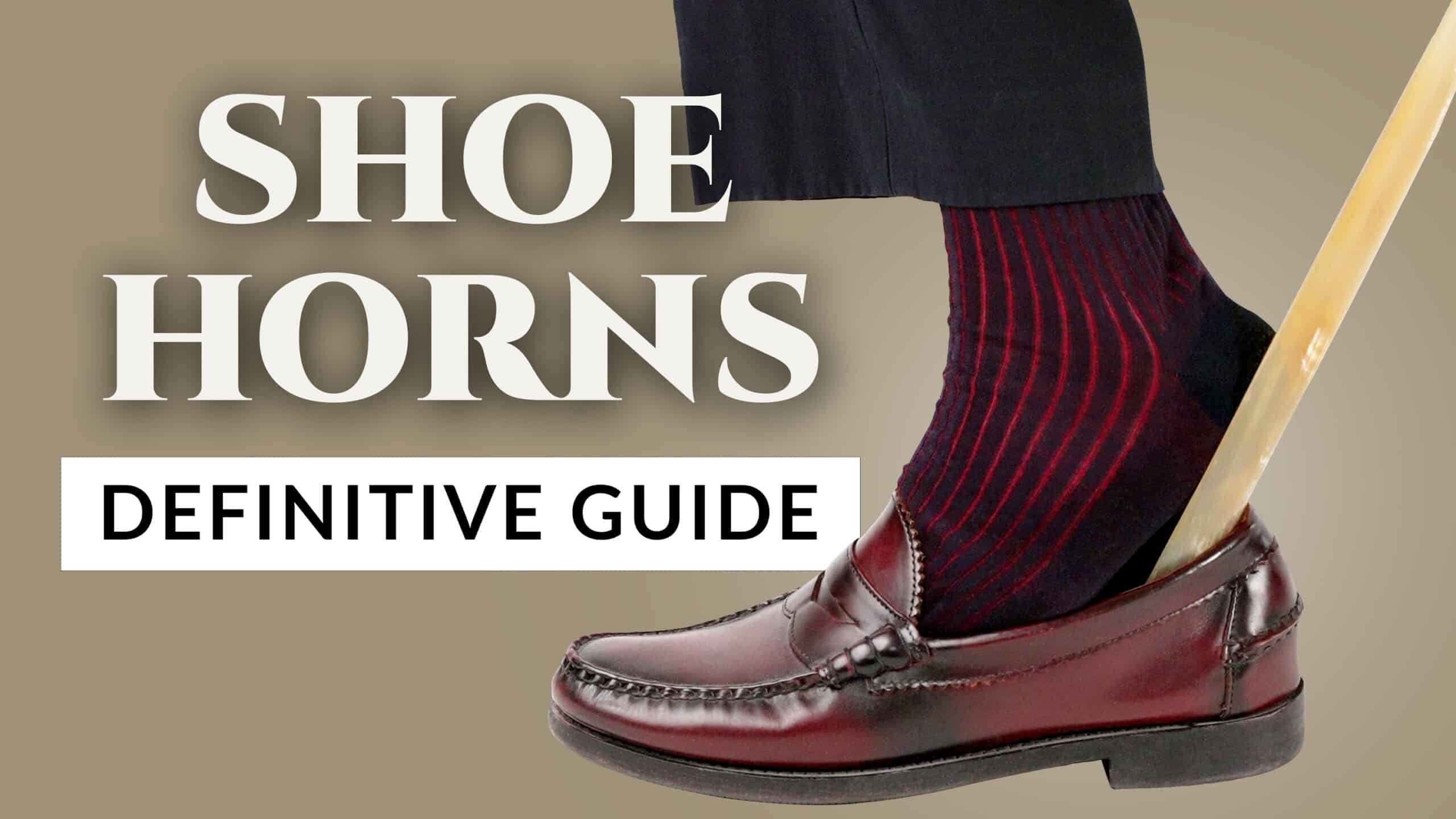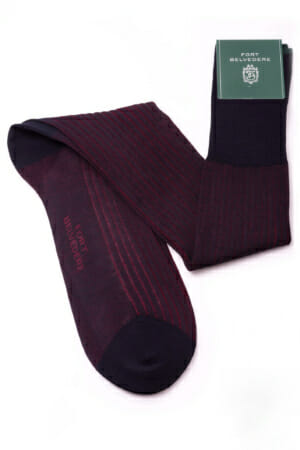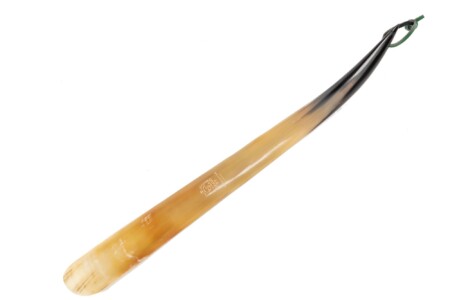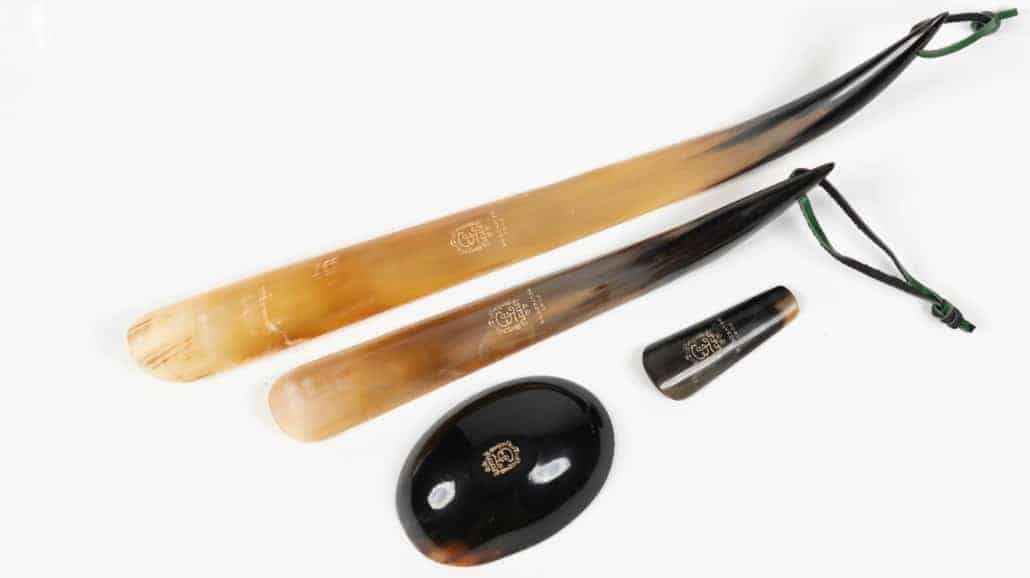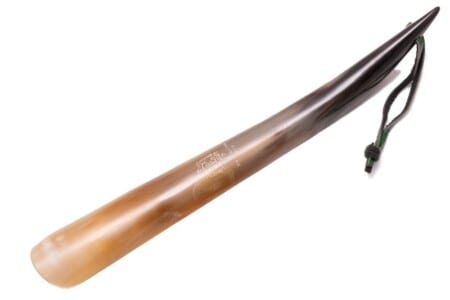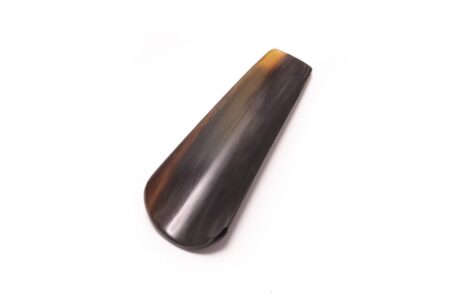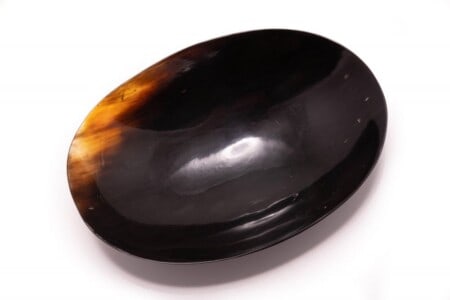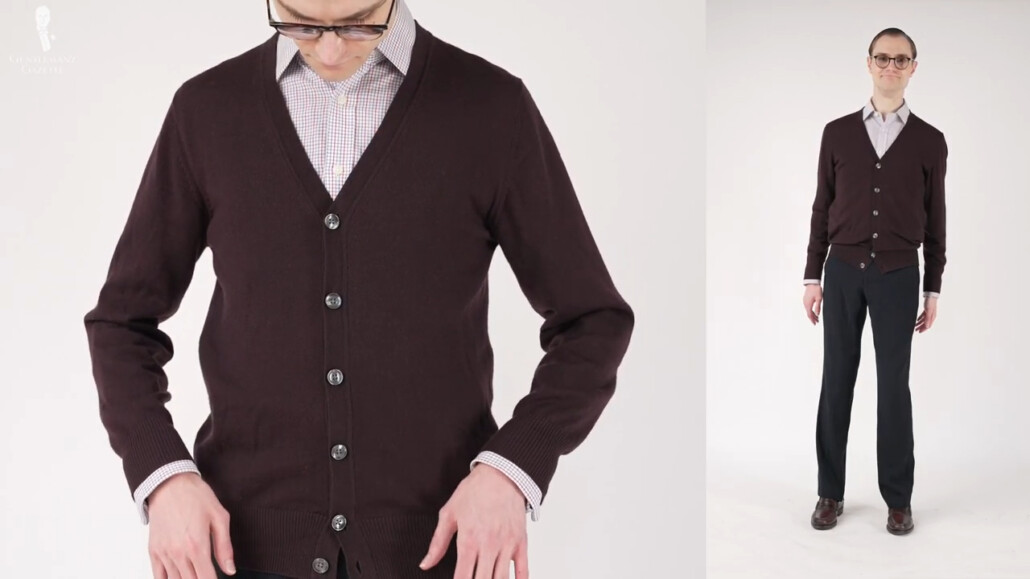Within the world of clothing accessories, it can be difficult to find items that not only prolong the life of your garments but also help with the ease of putting them on. One such item that fits this bill perfectly: the shoe horn! In this installment of our Definitive Guide series, we have everything you need to know about shoehorns (plus more). Read on to find out!
Other than being decorative, many menswear items and accessories have functional elements to them. Cufflinks, for example, are not only decorative but also help to keep your shirt sleeves from flapping in the breeze as though you’re a rogue Jack Sparrow look-alike.
Of course, there are various elements of a classic wardrobe that do exist purely for decorative purposes, such as a crisp white pocket square, which helps to complete the look of your jacket and definitely isn’t a handkerchief.
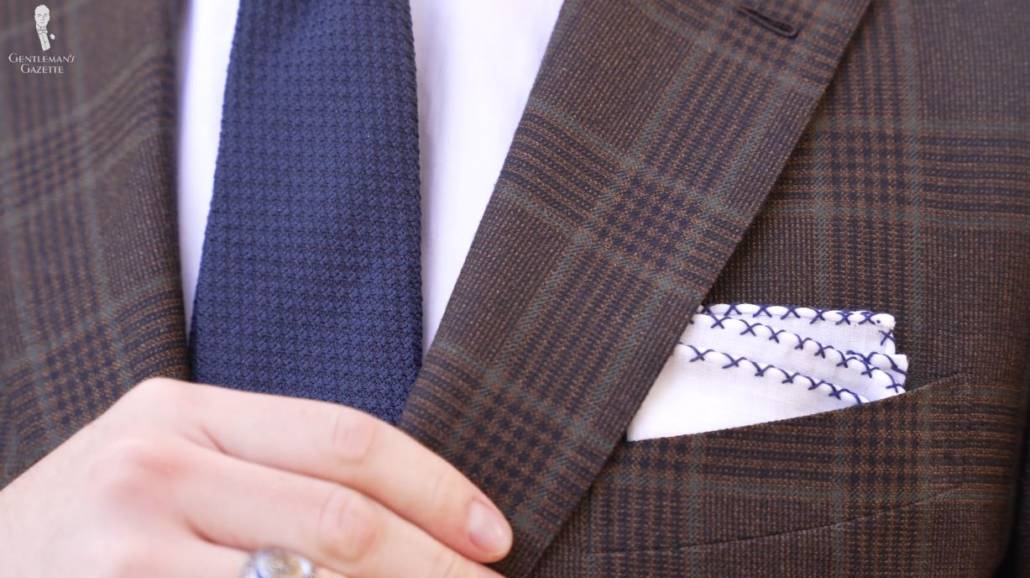
For another item, though, that ticks both of these boxes, which is to say is both aesthetically pleasing and functional, you need to look no further than one of the unsung elements of a gentleman’s arsenal – the shoehorn.
What is a Shoehorn?
In simplest terms, a shoe horn is a contoured piece of rigid material that is used to assist you when putting on a pair of shoes. You simply insert the wide end into the heel of your shoe, and while keeping a firm grip on the horn, slide your foot into your shoe as your heel slides along the length of the shoehorn.
By the way, just before your heel hits the footbed of your shoe, it can be a good idea to give the shoehorn a slight movement to one side, so that it’s easier to remove. Otherwise, there’s a good chance you’re going to be suffering the agony of defeat.
There’s no real set method or technique to any other part of the process than what we’ve already described, but to help you get your feet into your shoes even more easily, it can also be helpful to loosen your laces. If your shoe has them, that is.
The shoehorn exists not only to make putting on your shoes a more comfortable experience, but also to prolong the life of your shoe, and specifically, the back or heel counter portion, which can become worn down or even destroyed if your shoes are put on improperly over time.
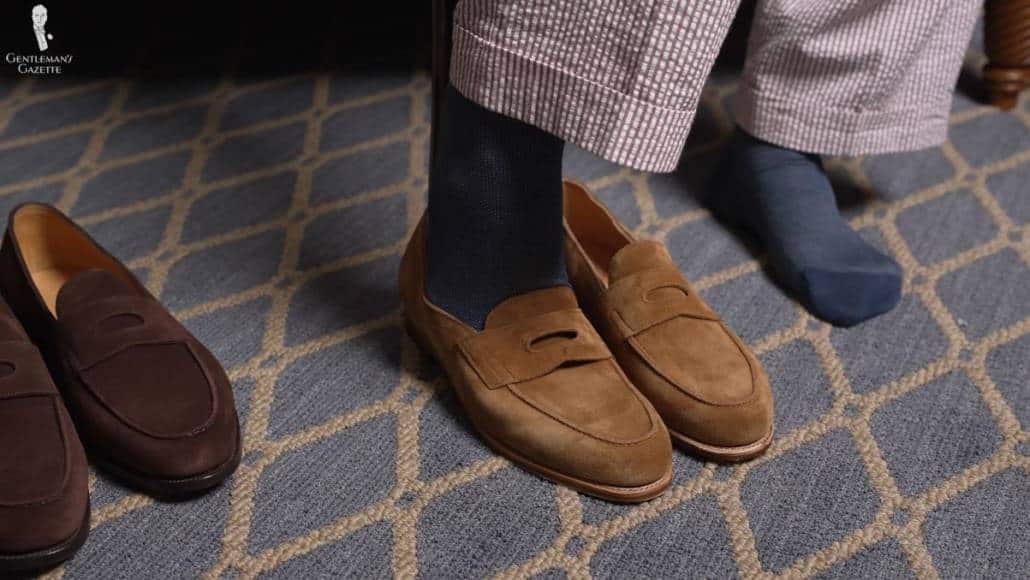
One of the best things about the shoehorn is that there are no limitations to the type of shoes it can be used with. Indeed it’s equally at home with a closed-laced Oxford or an open-laced derby shoe. A shoehorn is as essential with a loafer as it is with a buckled monk strap, and we would even go so far as to say that it can be used with a tennis shoe in order to keep your Yeezys looking fresh.
There’s no denying that the shoehorn is a particularly useful addition to your wardrobe. Before we go any further, though, we should answer the question of just how long they’ve been around.
History of Shoehorns
Although there are no particular records that credit any one person with having invented the shoehorn, it appears that they’ve been around since about the late Middle Ages. The first recorded documentation sees the device referred to as a “schoyng horne.” I think I pronounced that right.
Indeed, in the years between 1563 and 1566, Queen Elizabeth I of England purchased no fewer than 18 shoehorns. It’s not clear whether these 18 shoehorns were used by the Queen herself, or whether her friends family, and staff benefited from them, but whatever the case, given the constrictive clothing of the time, it’s a safe bet that no one particularly enjoyed bending over to put on their own shoes.

The following year in 1567, Elizabeth ordered four more shoehorns from the blacksmiths Gilbert Polson and Richard Jeffrey. These were made of steel and Elizabeth didn’t require any further horn orders until 1586. Around this time, shoehorns were made from a variety of different materials, including metal, wood, bone, ivory, and of course, animal horn.
So, despite the Queen’s shoehorn shopping spree, it’s easy to see why there was a 19-year gap between her last two orders because shoehorns were being made of more and more durable materials. As these items were built to last, it’s a safe bet that the majority of them were given decorative patterns, and indeed, some were even carved with scrimshaw.

We have seen an example from 1598 and Robert Mindum, the earliest recorded engraver in England of horn products. Mindum is known to have crafted at least 20 of these ornately decorated shoehorns, as this is the number that are still in existence today. His shoehorns often had the names of their owners engraved into them, along with the date that it was made.
What’s particularly interesting is how the shape and size of these historical artifacts don’t differ that much from the size of shoehorns that are made today. Most of the examples we found while researching had an average length of 7 to 8 inches, and the longest was at 11 inches, which is about the size range of most modern shoehorns.

Indeed, the overall design of the shoehorn would stay relatively consistent over the course of its history, with minor modifications being made here or there along the way.
We can see a small hole at the end of some of the shoehorns Mindum created, but there are also other examples of him using the natural curvature of the animal horn as a hook. The small hole, which is still present on many modern shoe horns, is designed so that one can insert a small loop of fabric, thread, or leather in order to hang the shoehorn where it’s ready for use.

The addition of the hooked back design at their narrow end gave users the option to either hang the shoe horn by the loop or by the hook itself.
Shoehorn history actually dries up somewhat at this point, but that may be because the shoehorn seems to be one of those rare gems that do the simple task it’s designed for so well that it’s simply flown under the radar for most of its recorded history. That’s why we thought it was high time to give the shoehorn a bit more love and attention.
Shoehorns Today
It’s really just within the last few decades where things have become more complex for the shoehorn. After all, we as humans do love to over-engineer things. These days, you can find a whole host of shoehorns with different features, such as shoehorns with a secondary purpose like a back scratcher, bottle opener, or decorative animal head.
There are also extremely long-handled shoehorns, as well as short-handled ones. For those who want variable reach, there are also extending shoehorns.

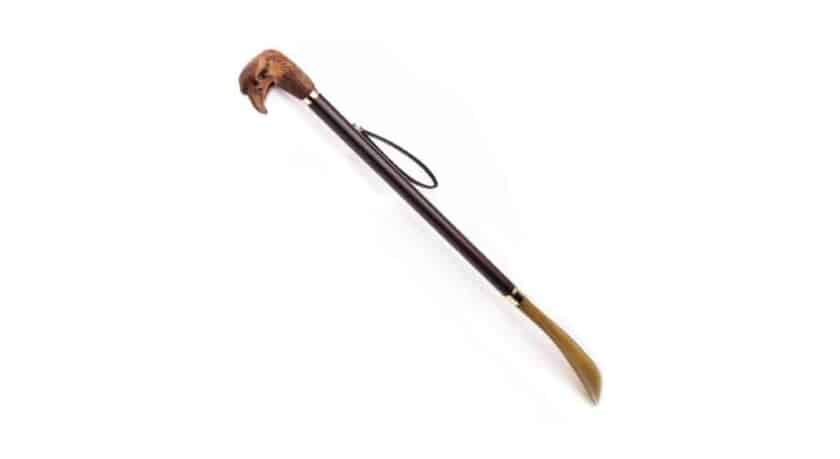

Shoehorns can also be built into certain other menswear accessories and devices, such as combination clothes brushes and shoe horns like the one you’re seeing here. You can also find folding shoehorn designs, and you may even be the lucky recipient of a shoehorn in a Christmas cracker.
So, with such a wide variety of different shoehorn types available, it should be no surprise that they’re also now made from a wide variety of materials.
Plastic
One of the most ubiquitous is undoubtedly plastic because it’s incredibly cheap, simple, and easy to produce, sturdy yet flexible, and easy to clean, which makes it the go-to choice for most shoe stores. In addition to not really fitting the image of an elegant lifestyle, though, the most major downside to plastic is that it isn’t terribly environmentally friendly.

Metal
An option that’s usually at a similar price point to plastic is metal, most frequently shoehorns made from stainless steel. There’s a longevity to metal, which can be nice but overall, it can still look somewhat cheap or unattractive, and for some too much like surgical equipment.
Metal can also feel too cold or too hot to the skin, and can even get through a pair of fine cotton socks, depending on where it’s been stored prior to use.
Depending on the quality of machining, it can also have sharp edges, which could either damage your sock or be uncomfortable on your foot. If you’re traveling a metal shoehorn might also cause you a few extra issues at security checkpoints. So, that’s something to keep in mind if you’re in the market for a travel shoehorn.

Sometimes, you’ll find shoehorns that have a mixture of leather and metal, usually with the leather being incorporated into the handle and often seen in folding designs. The use of two materials in one shoehorn and the folding design, in particular, can come across as a bit overly fussy.
Where these folding styles are concerned, more moving parts mean a greater chance for things to go wrong. And given Murphy’s Law, you know that things will go wrong just when you need your shoehorn to work most.
Leather
There are also all leather shoehorns on the market as well, and these certainly do look a bit more gentlemanly, perhaps as a complement to your Chesterfield sofa. In reality, though, the majority of these models are actually plastic shoehorns with leather glued to the outside before it’s stitched down around the edge.
Leather-covered metal versions exist as well, of course, and these can be a bit more durable, but even on these, as well as all leather shoe horns where a stiffened piece of leather is used as the main component, these sewn edges can wear down and come apart over time and with repeated use.

This can also lead to a rougher feel over time, which could snag on your socks or, indeed, on your skin.
In addition to the risk of these multiple layers coming apart or fraying, more layers also mean more bulk, which can lead to an uncomfortable experience with the shoehorn in your shoe.
Wood
If you’re inclined toward a shoehorn that doesn’t use animal products, wood could be a great contender for you. Wood is light, strong, typically inexpensive, and depending on the variety of wood used, there will be a natural amount of flexibility to the shoehorn.
As an added bonus, wood can also be engraved, which means there’s an opportunity to add some personality or perhaps initials to your wooden shoehorn.

Still, there is a possibility for wood to weather, weaken, break, or get rough over time and with repeated use.
Horn
Lastly, we think that there’s one material for shoehorns that stands head and shoulders above the rest, and the clue is right there in the name: horn. Being made from multiple layers of dense fibers, animal horn is naturally strong when it’s carved into the required shape for a shoehorn.
In our own testing at Fort Belvedere, we’ve found that water buffalo horn is not only the most durable choice, but also the most beautiful with every individual shoehorn being a fully unique piece and reflecting the beauty found in nature.


Buyer beware, as there are some plastic shoehorn models, which are designed to look like horn but aren’t, in fact, genuine. In these diagrams, you can see the overall differences between water buffalo horn on the left and cow horn on the right.

Both have a fibrous layer on the outside that can be crafted into horn products, but this fibrous layer on the buffalo horn is much thicker than on the cow horn. This allows for greater freedom of choice when manufacturing items like shoehorns and it’s why at Fort Belvedere, we can offer three different sizes of shoehorn, along with our tidbit tray.
Hallmarks of a Quality Shoehorn
Genuine Horn
As we’ve alluded to in the materials that shoehorn are being made from, a good quality shoehorn is made with an animal horn; that is, a genuine one.
Length
First up is the optimum length for putting your shoes on while standing up: 25 inches. From most retailers, it’s almost unheard of to find a genuine water buffalo horn shoehorn at this length, because it requires so much time and care to find one continuous piece of horn with no marks or other blemishes for the job.
Not only does it take a greater amount of time to source a piece of horn at the full length, but also to carve it properly as well. Nevertheless, we think a shoehorn in this length is perfect for any type of shoe, but it’s especially helpful with slip-on styles such as loafers.

Longer shoe horns can also be helpful if you’d like to use them to put on boots, but typically, many boot styles will have a small loop built into the back of the boot, so that they can be pulled on this way, rather than using a shoehorn.
In our 25-inch model, as well as our 15-inch model, which is perfect for putting on your shoes while sitting down, we’ve also been able to use the natural curvature of the horn in the design. This serves as a great naturally ergonomic handle, as well as showcasing the unique beauty of each individual horn piece.

Furthermore, in a nod to the antique shoehorns created by Robert Mindum, you’ll also find a small hole in the tips of our shoehorns, where we’ve inserted a leather strap so that you can hang them wherever you’d like.
For all of those occasions when you may need to remove or replace your shoes and don’t have a full-length model handy, airport security we’re looking at you, then our pocket-size or travel shoehorn is the ideal complement.

At approximately four and a half inches in length, and created from an equally beautiful piece of water buffalo horn, this nifty little model is the perfect accompaniment to a jacket pocket, everyday carry bag, or overnight luggage. With a shoehorn of this size, simplicity is key, which is why you won’t find any folding gimmicks or even a leather strap to hang it up.
What makes all of our Fort Belvedere shoehorns truly outstanding, at least in our opinion, is our dedication to quality and craftsmanship.
By selecting only the finest specimens of natural water buffalo horn, carving each piece into an individual shoehorn by hand, and adding a traditional matte polish as a finishing touch, the resulting products are unique and beautiful sartorial tools, which will stand the test of time, and indeed, last a lifetime. Hopefully, you will even be able to enjoy your shoehorns for generations to come.
Outfit Rundown
The central element is my wine-colored merino wool cardigan sweater from Charles Tyrwhitt, and I’m wearing it over a shirt also from Tyrwhitt that features a microgrid pattern of red and blue on a white ground. The shirt does have French cuffs, but I’ve got them configured in a barrel style, and closed with simple black links that aren’t meant to be seen, just so the sleeves can fit more easily under those of the sweater.
My trousers are in plain navy to harmonize with the blue tones in my shirt, and my socks are from Fort Belvedere. They are our two-toned shadow stripe models in burgundy and midnight blue. Reinforcing the red color feel and the overall casualness of the outfit are my shoes, which are a pair of dark oxblood penny loafers from Allen Edmonds.
You can find the socks I’m wearing along with a wide variety of other menswear accessories, and of course, our shoehorns and horn tidbit tray in the Fort Belvedere shop here.
